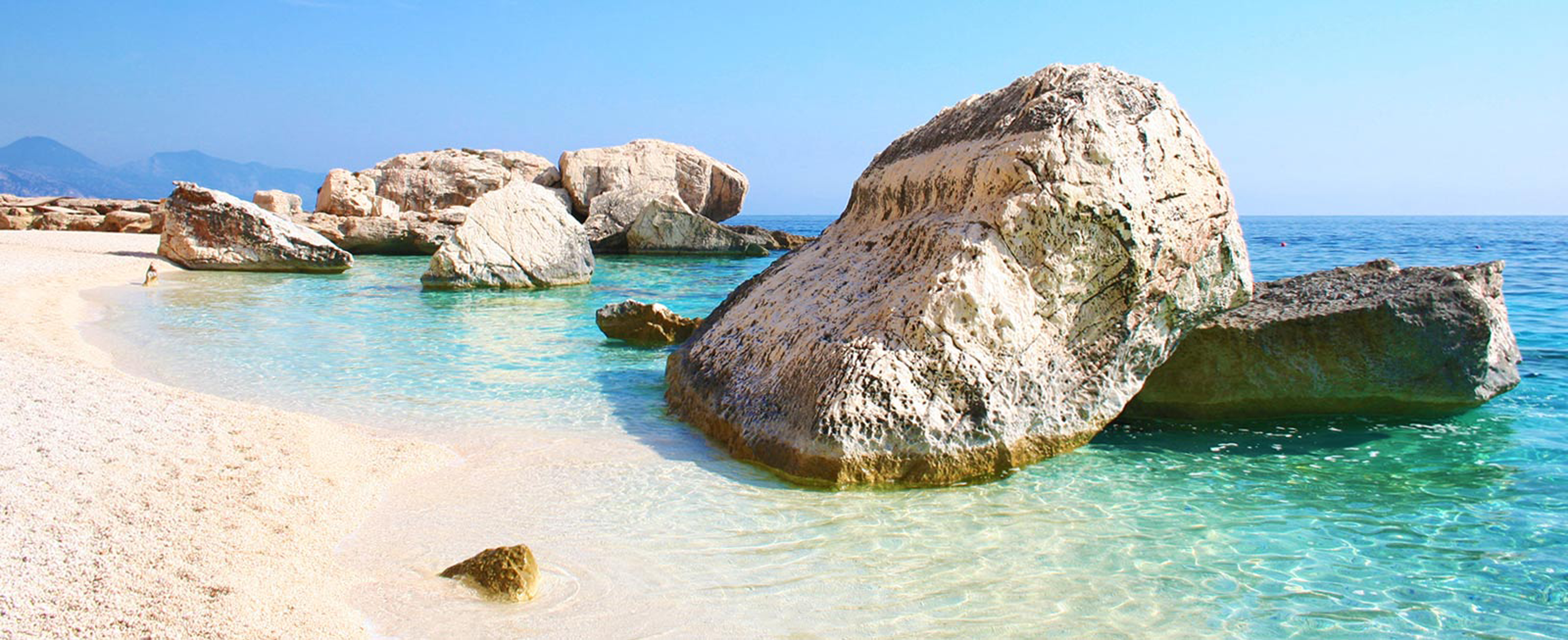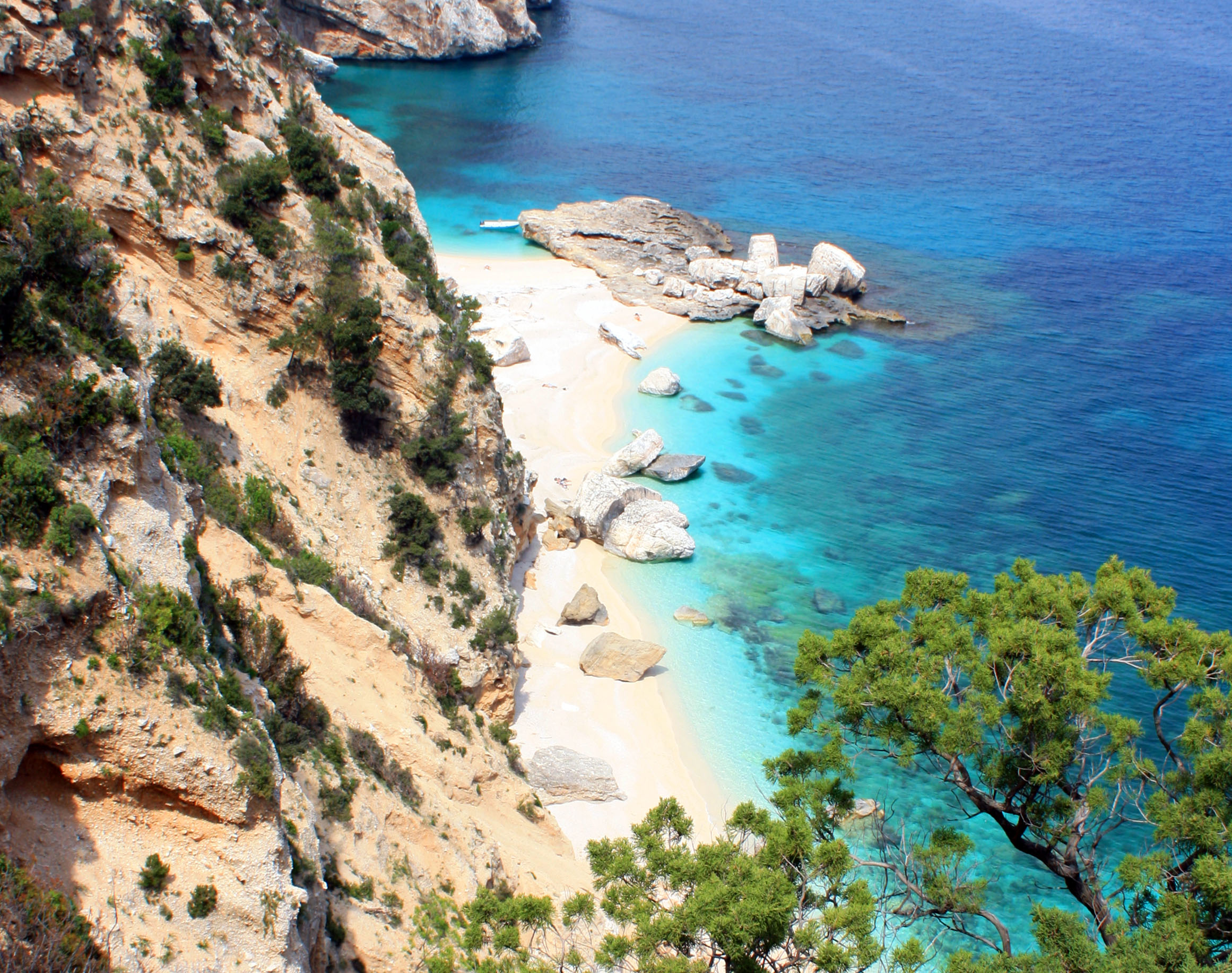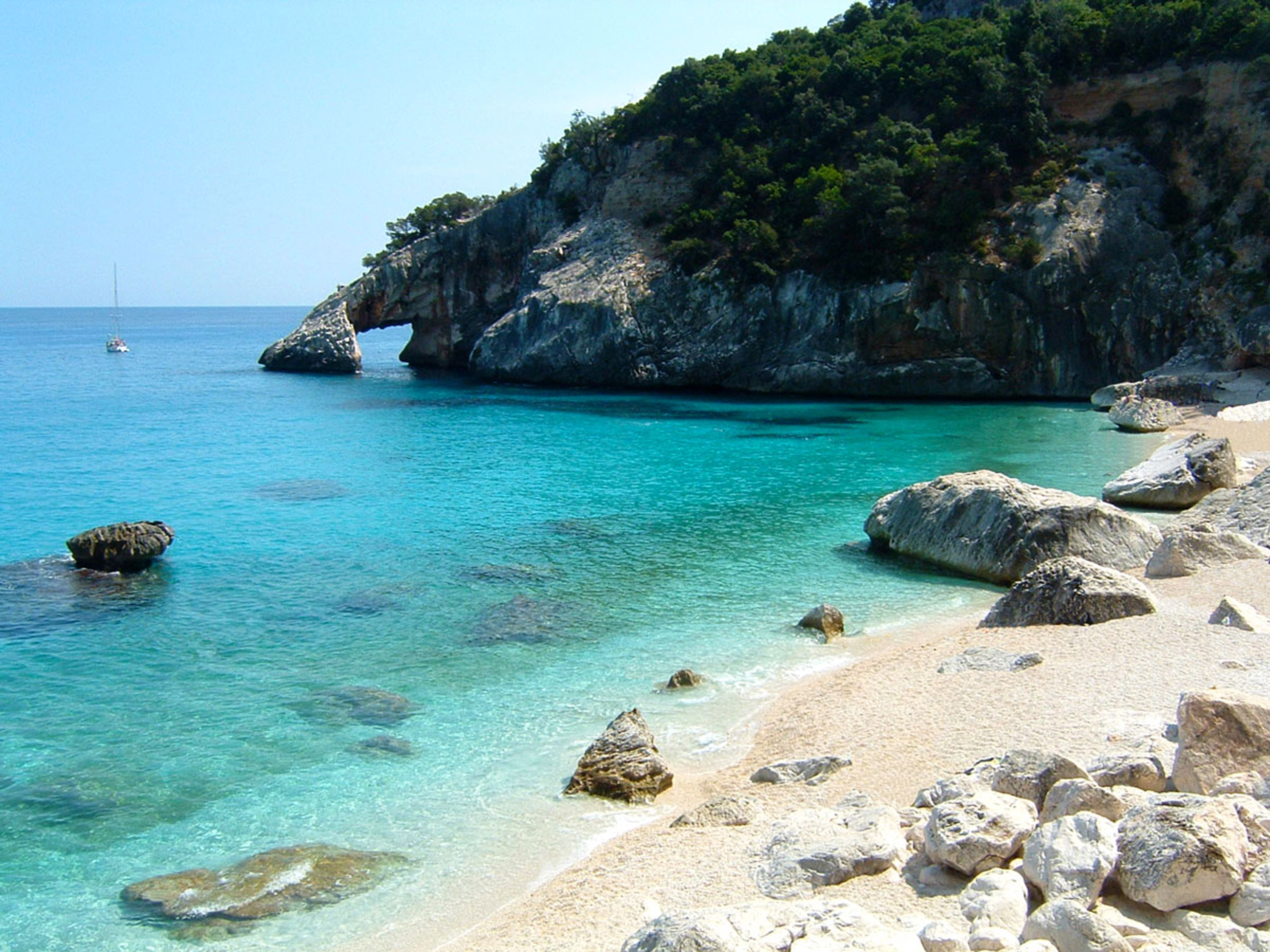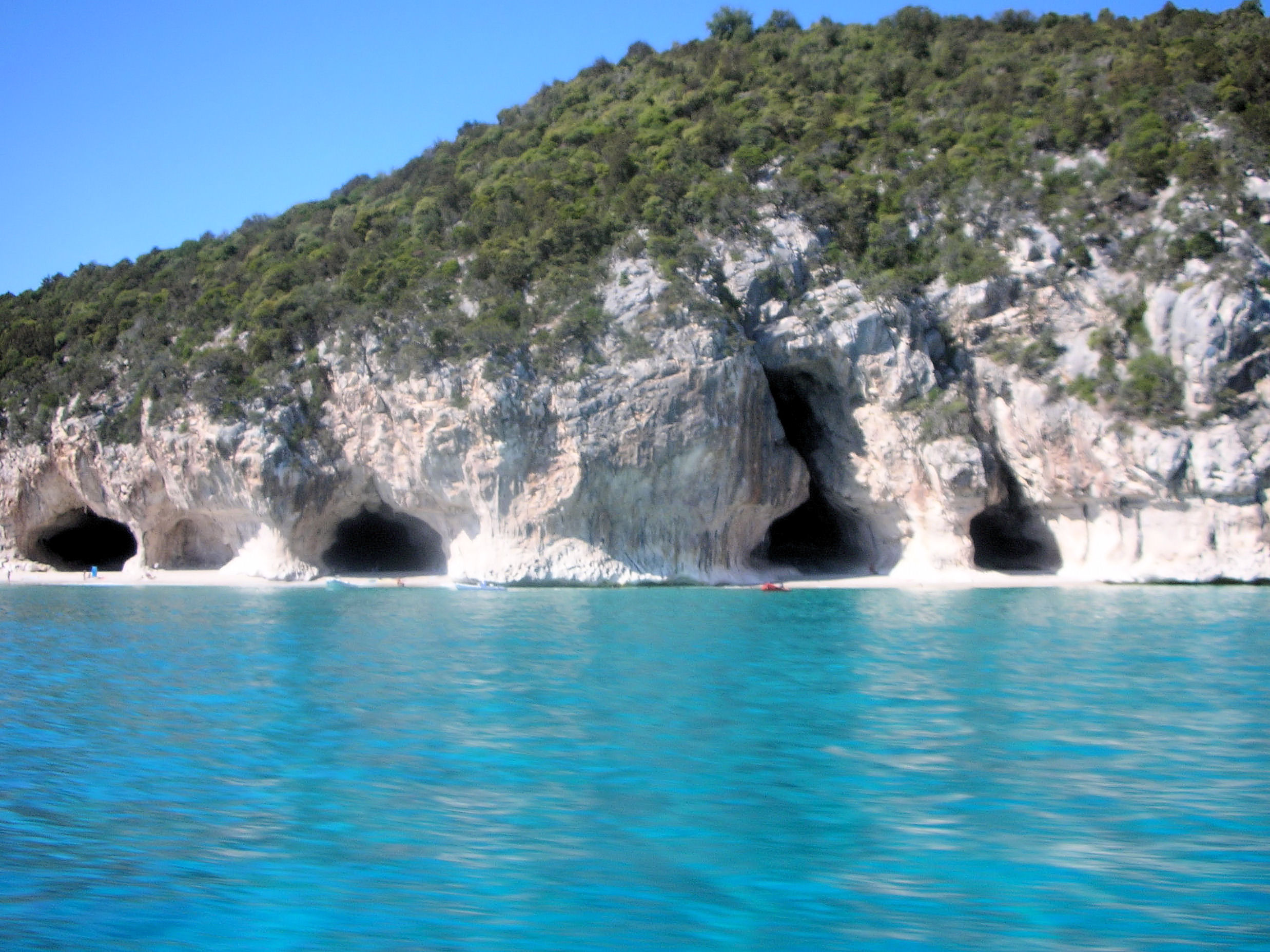
Baunei Area, Cala Luna and other beaches
This post is also available in:
 Italiano (Italian)
Italiano (Italian)
The territory of Baunei, in the province of Ogliastra (in the central-eastern part of Sardinia), is an uncontaminated area, with imposing limestone bastions at its back; those very slopes eventually reach coves and the sea. The local rocky and mountain profile has always impacted with the local traditions, as still evidenced by the XVII century pastoral heritage of the town of Baunei; the latter is literally perched at a height of 1.574 ft, leaning over Ogliastra and overlooking the natural amphitheatre of hills and mountains, such as the S’Abbadorgiu Peak and some of the highest reliefs of Gennargentu.
Almost the entire municipal area develops at altitudes exceeding 1.312 ft. It is furrowed by deep and narrow valleys (the codule) and features extensive and very steep limestone walls, cliffs, coves, cliffs, sinkholes, canyons and karstic valleys. On the Golgo Plateau, “Su Sterru” is the deepest karstic chasm in Europe, featuring some ancient ponds nearby, known as “As Piscinas”.
Cala Luna, Cala Goloritzè and Cala Mariolu are the most important beaches in the Baunei area: they can be reached by land, passing through rocky monuments and panoramic points, or by sea.
Cala Luna can be reached via an old panoramic mule track originating from the Margine Plateau. Along the way, it is possible to admire centuries-old sheepfolds such as that of “Onamarra”.
The cove, narrowed by steep rock walls, is about 657-ft wide and is the actual mouth of a small stream (the Codula) which flows from the nearby mountains of the Golgo Plateau. It features white pebbles, that enhance its crystal-clear water, and a shallow seabed.
The area is full of caves: one of them opens right onto the cove, while not far away there’s Grotta del Fico, reachable only by sea.
When leaving Golgo plateau, visitors can easily reach Cala Goloritzé on a very scenic route, characterized by a splendid natural arch that opens on the right side of the bay. In a ravine between the rocks, there is also a source of freshwater that flows into the sea from the subsoil.
Flora and fauna
The local flora is typical of the Mediterranean primary forest. The Mediterranean scrub is particularly abundant, with centuries-old woods of holm oaks and junipers, especially in the ancient and thick vegetation on the top of Mount Santo.
The local fauna features some rare species, including some animals currently threatened of extinction. For instance, the coast is very popular among Corsican gulls, which nests only in pristine environments. Eleonora’s falcons (Falco Eleonorae) also regularly nest here, in their biggest Mediterranean colony in this territory. There are also golden eagles, mouflons, goshawks, peregrine Falcons, and Bonelli’s eagles.
This post is also available in:
 Italiano (Italian)
Italiano (Italian)
Contatti
Baunei(OG)




